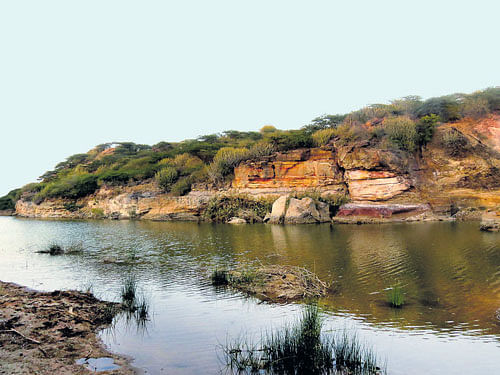
We were looking at the state-wise numbers of Biodiversity Management Committees (BMC) in the country. Madhya Pradesh stood atop the list with 23,743 and Nagaland at the other end with 10. However, what left us surprised was number committees in the largest state, Rajasthan. The state had only 31 to its credit. The number for these committees which are to be set up in every local body — urban and rural — stands at 3,405 for Gujarat.
There would be factors at play to account for the stark variance in numbers and these need to be looked into, but here, we will focus on our experiences in Kutch. We are a part of a team that attempts to facilitate BMCs in conserving the biodiversity on the village lands in Kutch; on request from the State Biodiversity Board.
State Biodiversity Boards are placed at the centre of the proverbial pyramid under the Biological Diversity Act. They govern BMCs in the state and report to the National Biodiversity Authority — the apex body. The Act gives broad powers to BMCs to promote conservation, sustainable use and documentation of biological diversity. Our team at the Bhuj-based not-for-profit Sahjeevan saw immense potential in the Act to move beyond the fortress approach to conservation; all the more pertinent in an ecologically-sensitive landscape like Kutch.
Ecosystem of Kutch include the sand desert, salt desert, thorn forest, grassland, scrub forest, coastal mangrove and inland mangrove. We have facilitated formation certain institutions with a view to involve people in the conservation of biodiversity on their lands and possibly ward of threats from ‘development’ — industries, roads or even mass tourism.
Formation of the committees and preparation of the People’s Biodiversity Registers (PBR) was the initial phase. The process of PBR was interesting to say the least — from holding meetings in villages to interviews with individuals who would have specific know-how like cattle-breeders and vaids; from visits to spots where wildlife species occurred to making an inventory of plants. The draft document was shared with villagers, edits made in accordance with their suggestions and ratified by the State Board.
Trial and error
We realised that while the PBRs help document the local ecological wisdom, there are not many examples to look up to on how the document has been put to further use and people’s interest in it retained. In other words, how to look at it as a process as opposed to an event. Of the 35 BMCs where we facilitated PBRs, we decided to continue our association with 12. This would be a pilot and help guide our long-term plans as well.
We, along with BMCs, identified issues that biodiversity values in these villages confront; issues that the BMCs could engage in. One of the major strengths of BMCs is the potential to work on local issues. Given the large geographical spread and high ecological richness, these issues differ from committee to committee and include:
Removal of invasive species (including from water bodies), and in select spaces planting of native species that the people could put to use.
Identifying patches bearing natural vegetation and taking steps to conserve them.
Developing guidelines (including imposing charges) for research and extraction of natural resources by outsiders.
Hiring a person (from the village) to keep a watch on the hunting and logging taking place in and around the village. Also explore joining hands with the Forest Department.
Addressing the issue of roadkills by putting up signs and/or speedbreakers at locations where they are regularly sighted.
Discussions and awareness sessions to help people get rid of select beliefs that lead them to harm wildlife.
Focusing on these issues and based on the information collected we, together with the committees, put in place short-term plans. Activities under these plans include identification of interested people and encouraging them to join hands, preparation of maps with focus on critical areas, putting in place parameters to monitor the focus species or critical areas and select preliminary actions like identification of areas for plantation of local species.
Like other actions that are worthwhile BMCs too have brought out formidable challenges; some of them interestingly on account of excess institutions and laws! One major test is to strengthen the BMCs such that they retain their crux and are not lost in the maze of institutions in the village; to prevent them from becoming just another committee forced upon the villagers by state and non-state actors. Understanding overlaps and generating synergies with other Acts — from the Indian Forest Act and Forest Rights Act to the Joint Forest Management Committees; and of course the very powerful Gujarat Panchayat Act that come into play in conserving biodiversity on these village lands.
We have plans in place for the next phase. These include deliberations on the roles and institutions, possible finance flows, capacity needs of our team, BMCs and supporters, and documentation. In the long run we plan to come up with a framework that could be put to wider use. This is easier said than done and the team now has to rise to the occasion. We have to come up with innovative answers to the questions BMCs pose and move beyond numbers to the nuances.